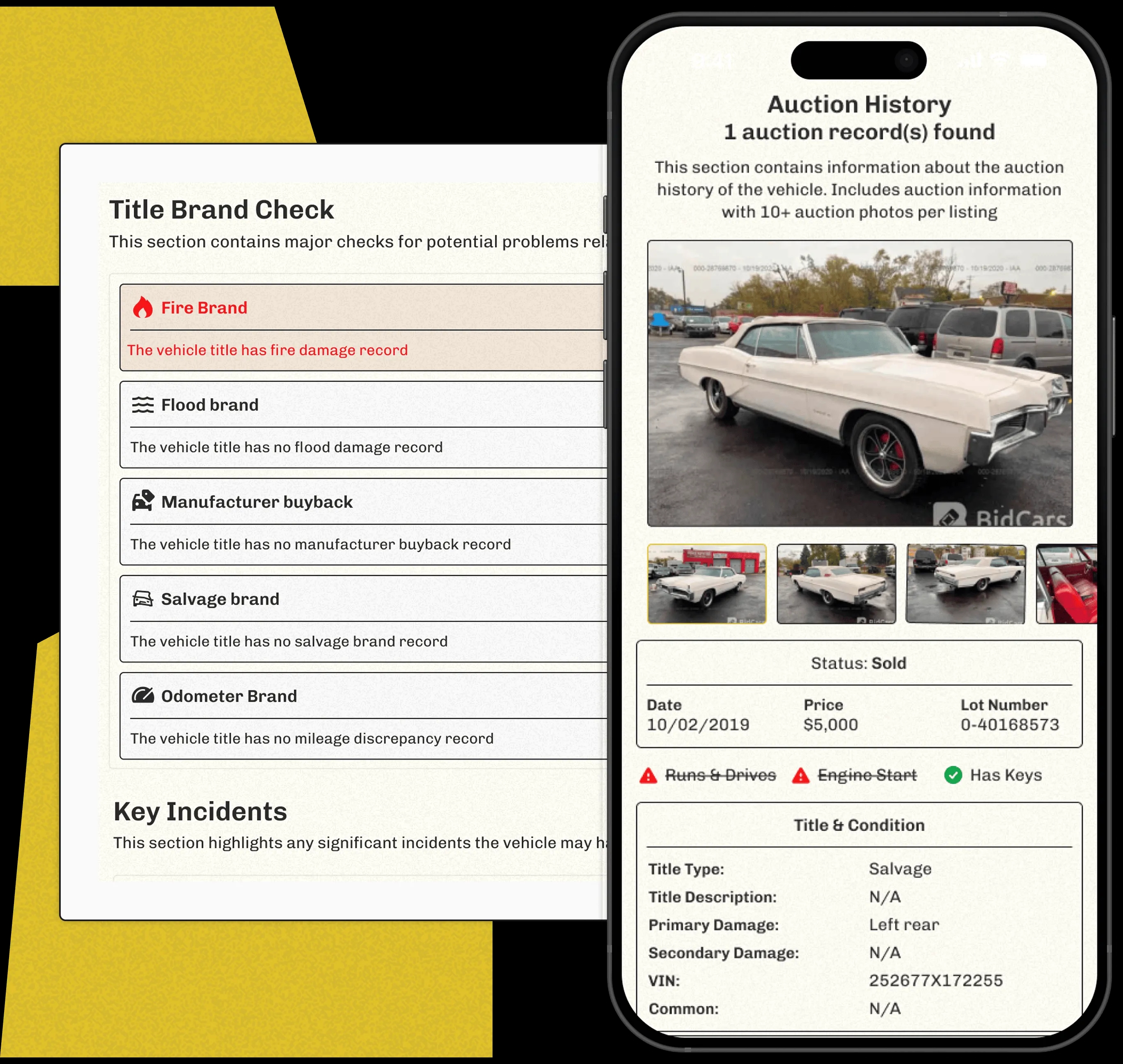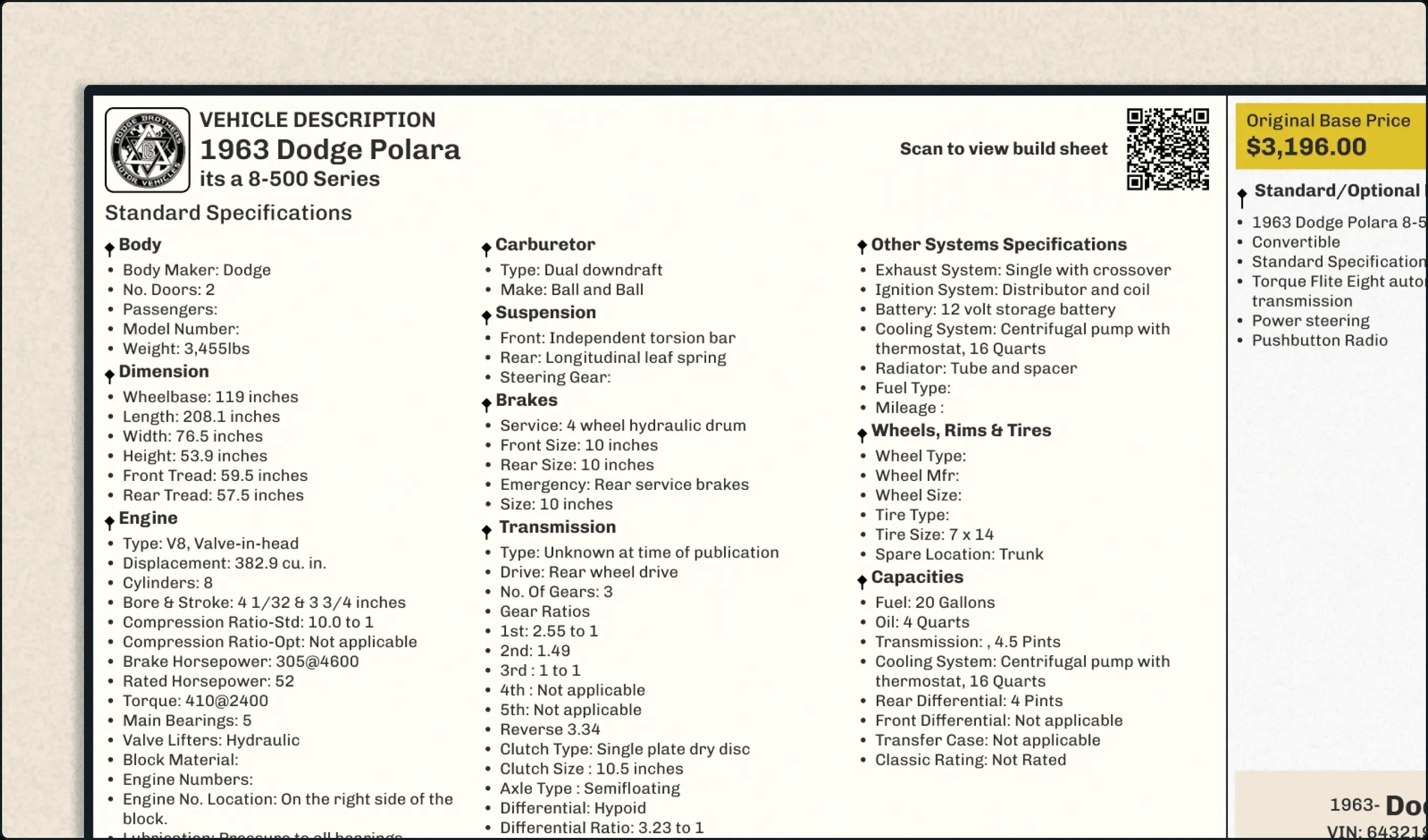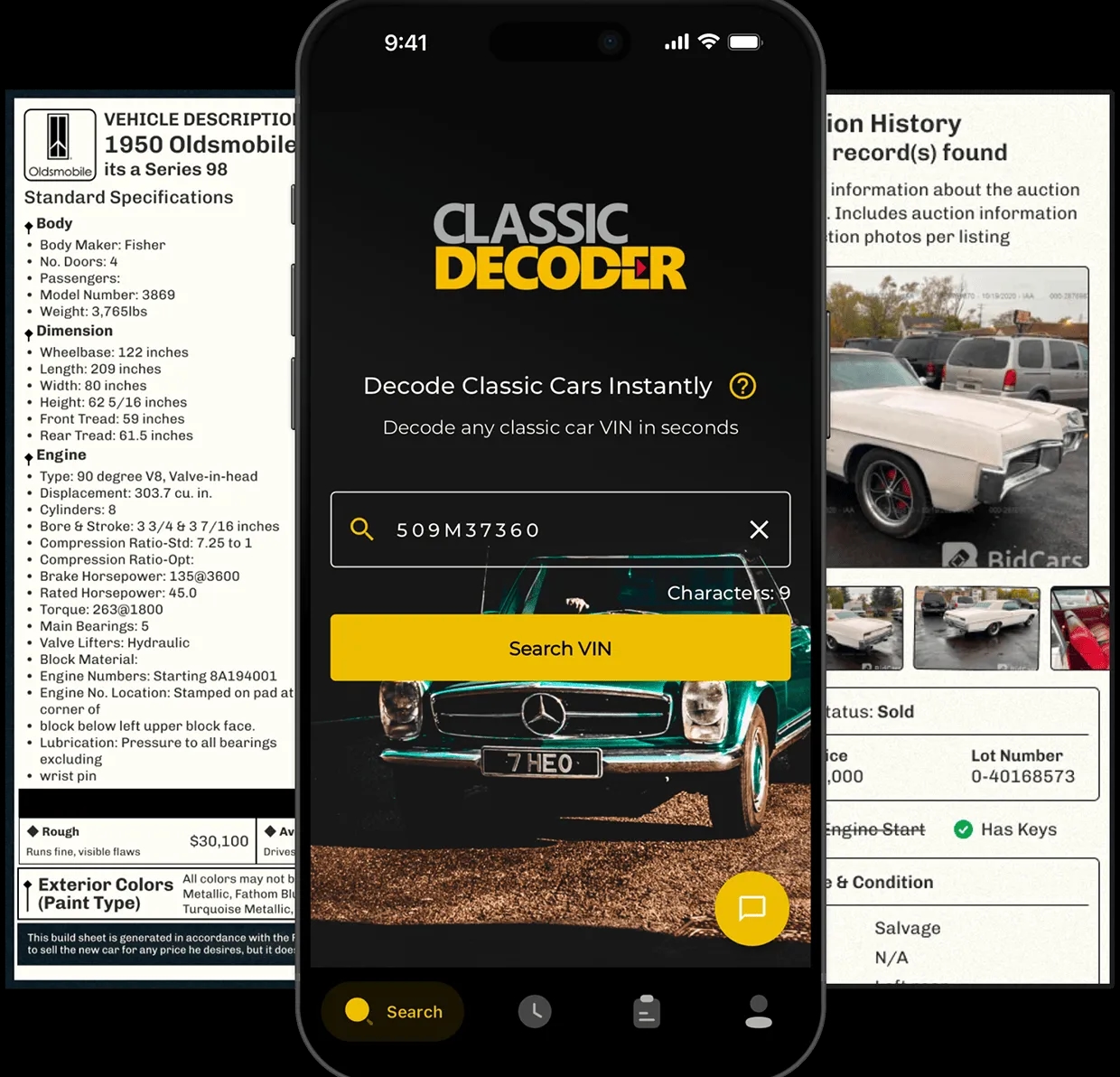1961 Plymouth Fury
The '61 Plymouth Fury: a stylish, big-finned beauty! Its sleek lines and powerful presence made it a popular choice, cementing its place in 60s Americana. Think "Christine" vibes, though hopefully without the demonic possession. A classic example of American muscle car charm.
Decode Classic VINs to Get Vehicle History Report and Build Sheet
Dive into the Classic World of Plymouth Fury
When it comes to classic cars with enigma and flair, the stands out with its intricate legacy and iconic presence on film, television, and even in the garages of the rich and famous. From its debut in 1955 to its grand finale in 1989, the Fury was not just a car—it was a statement. But you know what? Its allure goes beyond its engineering marvels; it's a veritable piece of American culture.

1961 Plymouth Fury Models:
Select the vehicle's model to see the correct data for it.
How Much is Plymouth Fury Worth?
Original MSRP :$2,485.00
Outstanding
Clean
Average
Rough
1961 Plymouth Fury Specs
Interested in buying a classic car or selling one?
Access detailed history reports for classic vehicles from hundreds of manufacturers.
- Accident Records
- Theft Records
- Loan & Lien Information
- Auction Information
- Salvage Information and more

Pop Culture Immortalization
Hollywood Glamour
One of the notable roles that pushed the Plymouth Fury into the spotlight was Stephen King's novel Christine, adapted into a 1983 horror film, featuring a 1958 Fury as the eponymous demon car. Now, this did wonders for its mystique! The Fury was also a scene-stealer in films like Scarface, where Tony Montana's character flaunted a unique convertible. The Fury's appearances translate directly to cultural clout; it's almost as if this car was destined for fame from the get-go.
Television and Tunes
Back in the golden days of TV, shows like Leave It to Beaver utilized the Fury to underline suburban elegance and charm—a seemingly perfect pairing. Plus, with car radios booming the tunes of legends like Lynyrd Skynyrd, the car became synonymous with the rock and roll journey. Essentially, driving a Fury was like piloting an American way of life .
Learn more about a classic car: Get Build Sheet by VIN.
Access reproduced classic build sheets to learn more about your classic vehicle details.
- Standard Specifications
- Original Base Price
- Standard & Optional Equipment
- Exterior & Interior Colors
- VIN ID & Location description

The Crème de la Crème: Famous Owners
Al Jolson: The Jazz Singer's Ride
Al Jolson, a key figure in bringing jazz to mainstream American culture, found pride in owning a Plymouth Fury. His choice signified a blending of soulful music with automotive artistry, much like an unexpected encore that leaves the audience spellbound.
Fred Waring: Orchestrating Automotive Prowess
Known for his work with the Pennsylvanians and for his contribution to popularizing choral music, Fred Waring's penchant for a Fury symbolized luxury meeting audacity. Often, it's those who create music's rhythm who appreciate the harmony of machinery.
Vincent Astor: The Aristocrat's Automobile
Astor's connection with the Fury was a nod to elegance and wealth, reflecting the car's luxurious appeal. You can imagine him driving this grand vehicle down Fifth Avenue as wide-eyed onlookers gazed on.
Cole Porter: A Melody of Style
Porter, famous for his sophisticated music, found resonance in the Fury's design—sleek, bold, and ahead of its time, much like his compositions. A car that was a perfect match for someone who constantly composed the unexpected.
Cultural Icons in Steering Wheels
Among the illustrious, the Plymouth Fury gained notoriety as the car that celebrities flaunted to cement their icon status, much like wearing a coveted designer suit to the Oscars. The connection between these figures and their rides extended beyond ownership; it was personal branding at its finest .
Engineering and Efficiency
While we're busy discussing culture, let's not forget the heart of the Fury—the engine. With a range of powerful V8 options, including the beastly 440 cubic inch (7.2 L) engine, the Fury was both beauty and brawn. However, let me tell you this: as powerful as it was, the drum brakes could be quite the adventure on a rainy day .
1961 Plymouth Fury Gallery














Interested in Buying or Selling a Classic Car?
Navigating the classic car marketplace requires more than just a keen eye for detail. Understanding history through a and a can reveal:
Accident Records
Theft Records
Loan & Lien Information
Auction Information
Salvage Information and more.
Don't skip these steps if you're in the market for authenticity or trying to fetch the best deal on your ride.
Behind the Wheel of History
As we recount the Pulse and Power, past and present of the Plymouth Fury, it's only apt to use a or a to uncover hidden stories etched in these cars. Because really, every classic car isn't just about horsepower or aesthetics; it's about embracing legacies on wheels.
Conclusion
While the Plymouth Fury may have bid its industrial goodbyes, its essence remains immortal—a veritable tapestry of America's automotive heart and soul. It's these stories of glamour, culture, and personalities that fuel the imagination and passion of any classic car aficionado like yourself. Who knew that under a sparkling hood, there lay not just pistons and gears, but a thriving piece of history waiting to ignite the American roadways once again?
Classic VIN Decoder App |Now available on both Android and iOS!
At Classic Decoder, we believe that developing a mobile app is a great way to extend our classic car data solution hub to as many users as possible across the globe. Our app is built with users and precision in mind. It holds the key to unlocking the history and details of any retro car at your fingertips. It also comes with fascinating and user-friendly features that make it stand out from other mobile apps designed for this purpose.
The Classic Decoder app lets you decode and lookup any classic VIN in a flash. Access accurate vehicle information and history, make an informed decision faster, and buy and trade in classic cars with confidence.

Download The Classic Decoder App now.
Some unique features include:
- Support all classic VIN lengths from 5 to 13 digits
- Support classic cars produced from 1910 – 1980
- Online Garage features – to add and manage your vehicles
- 24/7 Customer Support
- Easy onboarding for first-time users
Explore Plymouth Fury from Other Years
Frequently Asked Questions
Well, let's see... the 1961 Plymouth Fury, it's a real head-turner, you know? A few things really set it apart. Think of its distinctive tailfins – those babies are huge! They're like, seriously impressive. Also, the overall body style is quite unique for that year; it's a real classic design. And, of course, depending on the trim level, you might spot some fancy chrome details; really makes the car pop. Oh, and don't forget the iconic Plymouth badge – a must-have for identification purposes. You can't miss it. It's like a signature on the car. Identifying these features is like putting together a puzzle; each piece contributes to the overall picture. Ultimately, it's a combination of these characteristics that truly defines a '61 Fury.
The 1961 Plymouth Fury offered a range of powerplants, some more exciting than others. You had your standard V8s, naturally, ranging in size from relatively modest to pretty darn powerful (you know, for its time). Think of them as horses of different breeds, you have your workhorse and then your thoroughbred. Some models, depending on what they came with, you could get a punchy little six-cylinder. Not quite as exciting but it got you there! This varied engine selection catered to different preferences and needs. It really depended on what the buyer wanted; a budget-friendly choice or some real get-up-and-go.
The 1961 Fury came in a few different styles. Mostly, you'll see the two-door hardtop, which is always a classic; a real head-turner. Then you had the four-door sedan, the more practical choice. Think of it as the family car of its day. You also had a couple of station wagon options, perfect for those adventurous types who needed to haul a lot of stuff; camping trips anyone? It's like each body style caters to a different lifestyle or personality, really. There really was something for everyone.
Now, this is where things get tricky. The value of a '61 Fury is all over the map, really. It massively depends on the condition. A nicely restored, pristine example? You're looking at a pretty penny. Something that needs some serious TLC, maybe not so much. Think of it like a house; a fixer-upper will cost less upfront but can end up being a huge drain on your wallet if you're not careful. Condition, rarity of options, and overall originality are all key factors. Do your homework and consult some recent sales data for a more accurate valuation. It's a case-by-case thing for sure.
Owning a classic car is fun, but it's not without its challenges. With a '61 Fury, you should be aware of a few potential problem areas. The electrical system, for example, can be a bit finicky, sometimes; think of it as an old friend with some quirks. The brakes, you always want to keep an eye on them in older cars. And the transmission, well, it’s a classic car, so it’s gonna act like one sometimes. Regular maintenance is key; it's like keeping your body healthy; you gotta look after it or it will let you down. Prevention is always better than cure. Finding a knowledgeable mechanic specializing in classic cars is a smart move, too!

